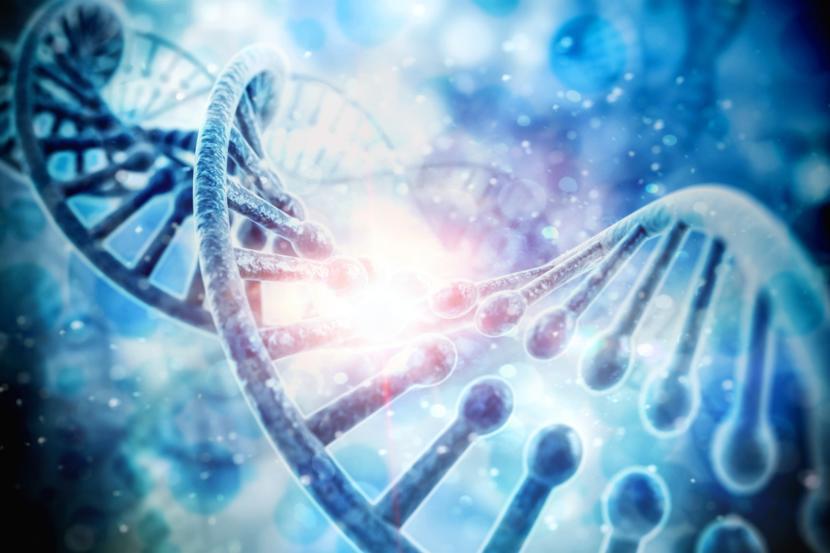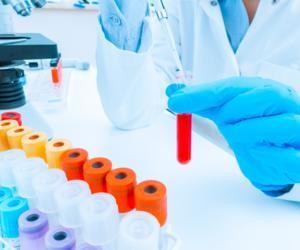New Screening Method Can Detect Tumor-Derived DNA in Women with Early Ovarian Cancer

Diagnostic issues have plagued ovarian cancer treatment efforts. Physical symptoms of ovarian cancer are initially vague (primarily mild common gastric and urinary problems). Surgical biopsy is its primary diagnostic focus.
Scientists have relied on DNA alterations found in biopsied tumor samples to formulate a diagnosis. If the biopsy report is positive for cancer, an elevated blood protein level of CA-125 has helped seal the diagnosis as many women with ovarian cancer have elevated CA-125 levels.
But, there are kinks in this approach. First, an elevated level of this protein also occurs in many common conditions, including endometriosis and pregnancy. Also, not all women with ovarian cancer have an elevated CA-125 level. Added to that, using this marker for screening has led to additional tests and even surgeries for women, and has not lowered the number of deaths caused by ovarian cancer.
When a woman not diagnosed with ovarian cancer has abnormal CA-125 findings, the physician might choose to repeat the test and/or consider ordering a not-routinely-used transvaginal ultrasound test (TVUS). For this test, an ultrasound wand is inserted into the woman’s vagina. Sound waves projected onto a monitor allow visualization of the woman’s uterus, fallopian tubes, and ovaries. It may help locate an ovarian tumor, but it has been found that most of the masses are benign.
Changes in screening recommendations
Because of these glitches with CA-125 and TVUS testing, major medical/professional organizations are now recommending that the tests not be used to screen for ovarian cancer.
Nevertheless, the use of CA-125 levels to monitor progression of cancer treatment is considered valid. A baseline level is determined. The testing is repeated during treatment. If the level goes down, it’s a good indicator that treatment is effective.
Because of the diagnostic issues, about 70% of women have advanced cancer when diagnosed. The survival rate for advanced Stage IV ovarian cancer is 17%. Research studies for diagnostic blood tests are increasing in the research field, but remain in the early stages of development.
The ovarian cancer community has suffered through so many dead-ends in the search for the diagnosis of ovarian cancer. That’s the prime reason why they and ovarian cancer patients are so elated with recent news of a possible break. Early-phased research at Johns Hopkins’ Kimmel Cancer Center in Baltimore, shows that a blood test can recognize specific DNA in different types of cancer cells.
More about the new research
The blood test can differentiate between cancerous and non-cancerous DNA. The suggestion of this finding is the ability to detect early stages of the disease. By isolating and identifying cancer tumors’ DNA from the circulating blood stream, diagnosis of ovarian cancer may become possible via a simple blood test.
Currently, only about 20% of ovarian cancers are diagnosed in the early stages. Since the cure of ovarian cancer most often occurs during the early stages before the cancer cells spread to other parts in the body, this test gives fresh hope for a future with a much lower ovarian cancer death rate.
Those who would benefit most from this study would be women with hereditary mutations of BRCA1 and/or BRCA2, making them relatively more susceptible to ovarian cancer.
Study participants were 200 cancer patients from the United States, Denmark and the Netherlands. Though their types of cancer varied, all samples were screened for 58 genes known to be linked to various cancers. Of the 42 diagnosed with ovarian cancer the test correctly detected 67% of the group with a Stage I diagnosis, 75% of those with Stages II and III disease, and 83% with Stage IV. While the results are reassuring, they are inconclusive at this point and need to be validated with larger numbers of test participants.
Who’s behind the study?
Leading the Johns Hopkins study is Dr. Victor Velculescu, M.D., Ph.D., professor of oncology at the center. The study report was published in the August 16, 2017 issue of Science Translational Medicine.
The goal of the Johns Hopkins team was to “develop a screening test that is highly specific for cancer and accurate enough to detect the cancer when present.” In addition, they wanted to “reduce the risk of false positive results that often lead to unnecessary over testing and over treatments.”
They identified their challenge as being able to “develop a blood test that could predict ‘probable presence’ of cancer without knowing the mutations present in a person’s tumor.”
The team had the task of sorting out cancer-derived mutations from the genetic alterations in blood cells which are normal inherited deviations. Such deviations could be confused with the cancer cell biomarkers. In what seems like a remarkable feat, they could recognize small amounts of DNA from the tumors in the bloodstream and were able to dismiss those that were non-cancerous.
The team credits genomic sequencing and their self- developed “targeted error correction sequencing” for their success.
The process of genomic sequencing is an important step in understanding its genetic code. According to Genome News Network, “Genome sequencing is often compared to "decoding," but a sequence is still very much in code. In a sense, a genome sequence is simply a very long string of letters in a mysterious language.”
Human genomes can be accessed via blood draws from those who volunteer to have their genetic material examined. An uncomplicated lab procedure splits cells in the blood sample and then draws out the DNA. The actual sequencing is done by high-tech machines. Genome News further tells us that “Much as your eye scans a sequence of letters to read a sentence, these machines ‘read’ a sequence of DNA bases”.
In a miraculous way, a DNA sequence ‘from life's chemical alphabet is transformed into our alphabet of written letters”.
But, sequencing the genome doesn't immediately solve the genetic mysteries of a species. “Even with a rough draft of the human genome sequence in hand, much work remains to be done. Scientists still must translate those strings of letters into an understanding of how the genome works: what the various genes that make up the genome do, how different genes are related, and how the various parts of the genome are coordinated. That is, they must figure out what those letters of the genome sequence mean.”
The team’s “targeted error correction sequencing” was programmed to read each chemical code 30,000 times to expose the DNA alterations they pursued. That process meant deep-sequencing of more than 80 base pairs of DNA.
Today's large-scale sequencing projects would be impossible without automatic sequencing machines, which have made DNA sequencing faster and more reliable.
The Johns Hopkins DNA research project has not only been complicated but very costly. Velculescu and his team are aware of the potential huge expense of their study. They have said they will consider decreasing costs by limiting the number of DNA screening locations if the test’s continued accuracy can be guaranteed.
Although cost of the research study has not been made public, funding for the study has been: the Dr. Miriam and Sheldon G. Adelson Medical Research Foundation; the Stand Up for Cancer- Dutch Cancer Society International Translational Cancer Research Dream Team; the Commonwealth Foundation; the Cigarette Restitution Fund Program, the Burroughs Welcome Fund; the Maryland-Genetics, Epidemiology and Medicine Training Program; the International Association for the Study of Lung Cancer/Prevent Cancer Foundation; the National Institutes of Health’s National Cancer Institute grants; the Danish Council for Independent Research; the Danish Council for Strategic Research; the Novo Nordisk Foundation; and the Danish Cancer Society.
References
https://www.sciencedaily.com/releases/2017/08/170816181305.htm
http://news.xinhuanet.com/english/2017-08/17/c_136531755.ht
https://www.cancer.org/cancer/ovarian-cancer/detection-diagnosis-staging/detection.html
https://www.nih.gov/news-events/nih-research-matters/detecting-early-signs-cancer-blood
http://www.genomenewsnetwork.org/resources/whats_a_genome/Chp2_1.shtml















